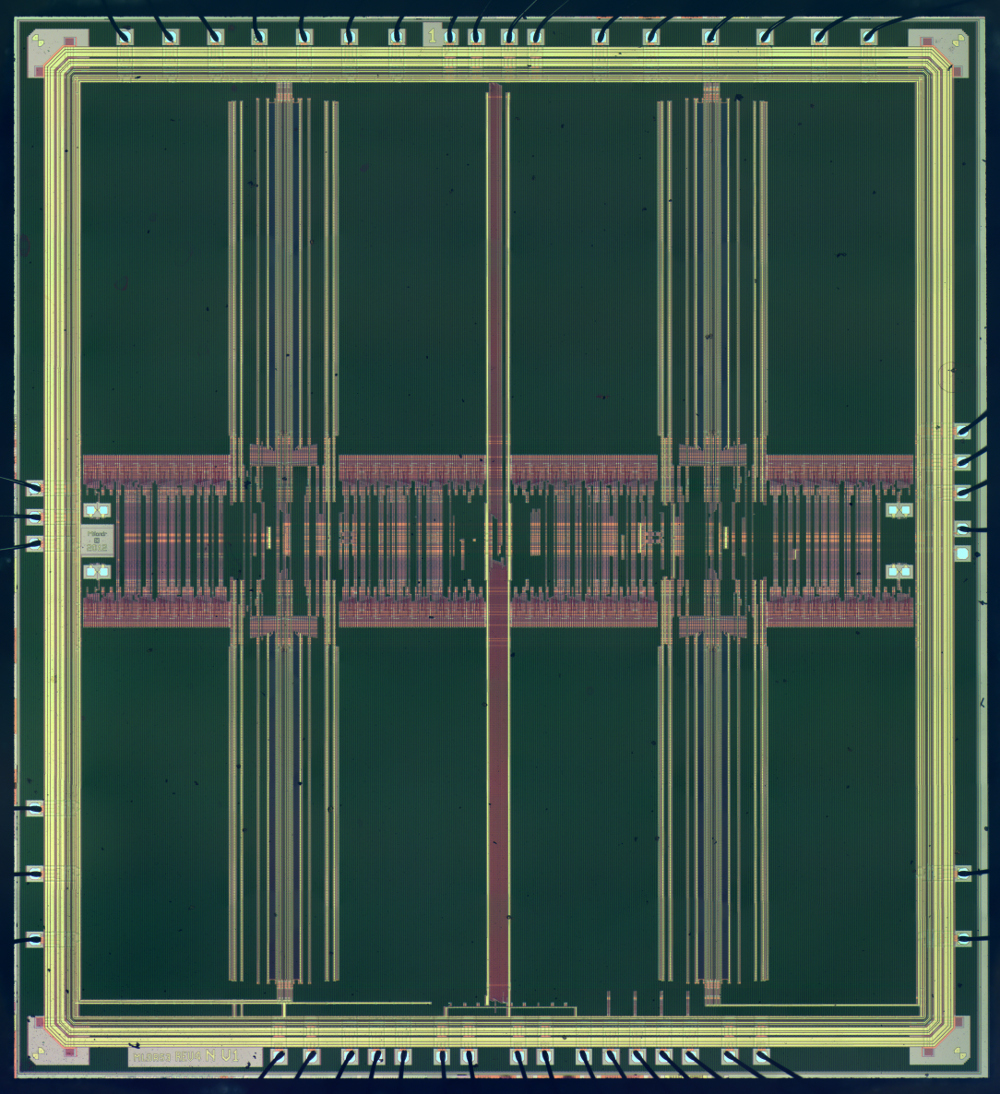March 18, 2014
TI LM393 - dual comparator : weekend die-shot
TI LM393 - dual comparator, one of old workhorses of electronics.Die size 704x748 µm.

March 16, 2014
Ti TS5A3159 - 1Ω analog switch : weekend die-shot
Ti TS5A3159 is an 1.65-5V 2:1 analog switch with ~1Ω matched channel resistance and "break-before-make" feature.Die size 1017x631 µm, 1µm technology.

February 17, 2014
FTDI FT232RL: real vs fake
For quite some time when you buy FTDI FT232RL chips from shady suppliers you have a good chance of getting mysteriously buggy chip which only works with drivers 2.08.14 or earlier. We've got a pair of such FTDI FT232RL chips - one genuine and one fake and decided to check if there is an internal difference between them. On the following photo - left one is genuine, right one is fake. One can notice difference in marking - on genuine chip it's laser engraved while on buggy it is printed (although this is not a universal distinguishing factor for other chips).
Read more →
January 17, 2014
ST 34C02 - 2048-bit EEPROM : weekend die-shot
STMicroelectronics 34C02 is an 2048-bit EEPROM with hardwire write-protect and I2C interface, typically used as SPD chip in DIMM memory modules.Die size 1542x1422 µm, 1.2µm half-pitch.

January 12, 2014
Microchip 24LCS52 : weekend die-shot
Microchip 24LCS52 is an 2048-bit EEPROM with I2C interface.Die size 1880x1880 µm, 2µm half-pitch.

Closer look at charge-pump:

December 29, 2013
Invensense MPU6050 6-axis MEMS IMU : weekend die-shot
MEMS is probably the most requested thing we are asked about. Year ago we unsucesfully tried to take a photo of MPU6050. Now it's time for revenge!Invensense MPU6050 is an integrated gyroscope and accelerometer with 16-bit readings. It contains 2 dies, soldered/welded face-to-face in multiple places (that's what was causing us troubles last time, required temperature for separation exceeded 600C).

On the overview photo you can see how not-flat they are. On a bigger die MEMS part is 28µm above surface, on smaller die - 100 µm above. Also, there is logic right under MEMS on the bigger die.

Size of big die is 2782x2718 µm, small die - 2778x2195 µm.
Read more →
December 23, 2013
1645RT2U - Milandr radhard antifuse ROM : weekend die-shot
1645RT2U - radhard 32k*8 antifuse ROM, designed by Milandr. Die size - 8232x8973 µm.Minimal observed half-pitch - 680nm.

Read more →




